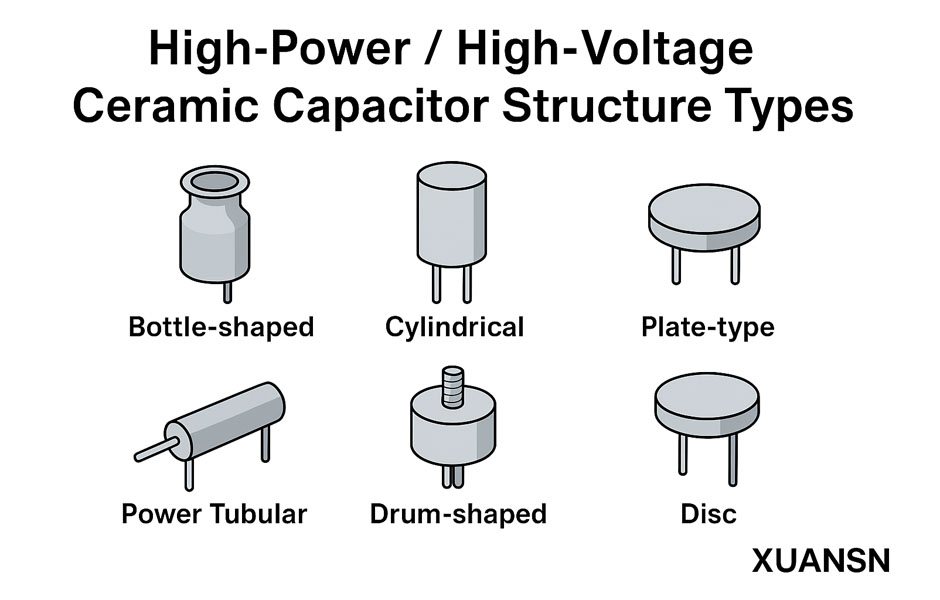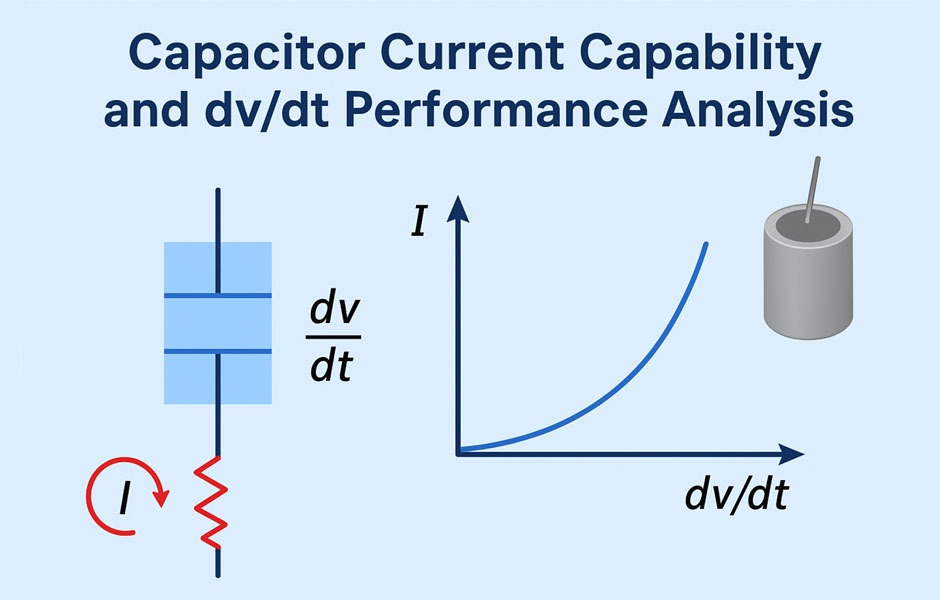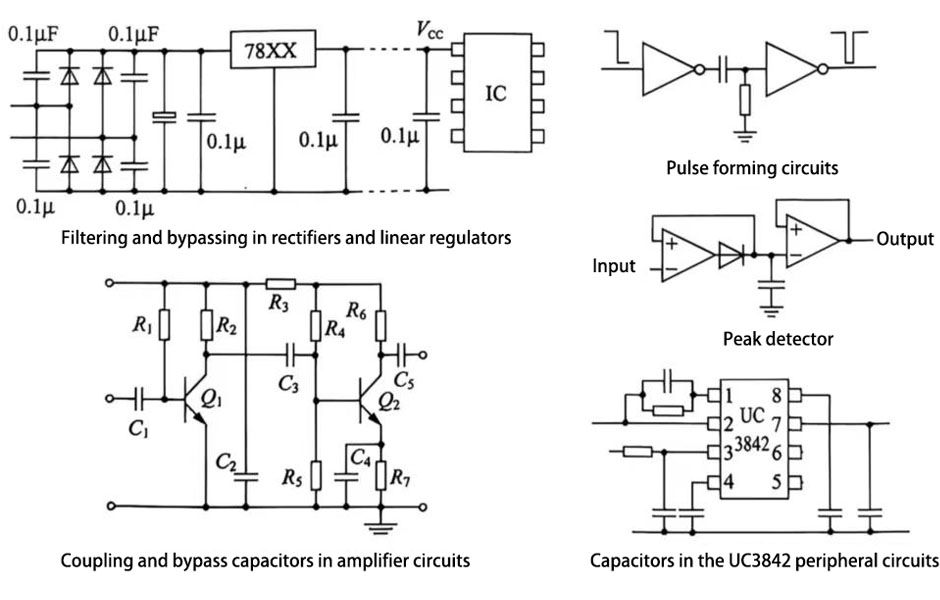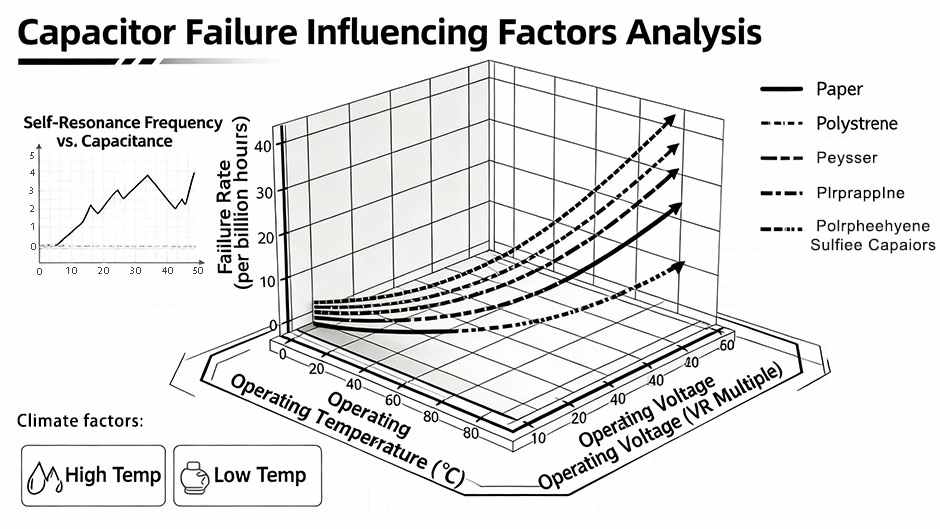1.Capacitance
Usually, the capacitance of capacitor of film ranges from 1000pF to tens of microfarads, and the compensation capacitors of power capacitors and medium-frequency power supplies can reach hundreds of microfarads. There are two ways to mark the capacitance units of film capacitors: nanofarads and microfarads. For convenience, nanofarads are used to mark low-capacity units for small capacitance, and microfarads are used to mark low-capacity units for large capacitance exceeding 1μF. This is much more convenient than the previous use of picofarads or microfarads. If the capacitance of 1000pF is 1nF, 1000pF, or 0.001uF, which one is more convenient? Of course, the former. For example, is it more convenient to use 10nF or 10 000pF to represent 10000pF? It is conceivable. Capacitance can also be represented by numbers, such as the first two examples can be represented by the numbers 102 and 103, which is very convenient.
The test conditions of the rated capacitance Ce of capacitor of film are shown in Table 1.
Table 1 Test conditions for capacitorof film
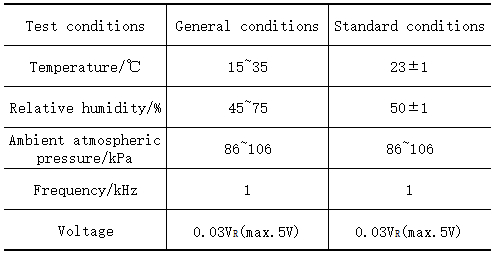
The capacitance is measured at standard ambient temperature. In order to avoid any worries, the measurement must be carried out under icing climate conditions.
The measurement frequency is selected according to normal conditions. The reference temperature is 20℃. Before measuring the capacitance, the capacitor must be stored under the measurement conditions until the entire capacitor reaches the measurement temperature and humidity.
2.Relationship between capacitance and temperature
The capacitance of the capacitor undergoes a reversible change within a certain temperature range between the highest and lowest temperatures. The gradient curve of capacitance/temperature is given by the temperature coefficient ac of the capacitance. This is essentially determined by the properties of the insulating material and the electrode foil, and is also related to the construction and measurement parameters of the capacitor. Polypropylene capacitors have negative temperature parameters, for example, the capacitance decreases with increasing temperature, and polyester capacitors have positive temperature coefficients.
The temperature coefficient is defined as the average capacitance change, the relevant capacitance is measured at (20±2)℃, and the temperature range is T1~T2. It is in units of 10-6K-1 (K is Kelvin temperature).
![]() (1)
(1)
Where C1 is the capacitance measured at T1; C2 is the capacitance measured at T2; C3 is the reference capacitance at (20±2)℃.
If the capacitor undergoes a temperature cycle, from the reference temperature to the minimum temperature Tmin, then to the maximum temperature Tmax, and finally back to the reference temperature, it may be observed that the capacitance undergoes a small change from the beginning to the end (see Figure 1).
In general, when making measurements, it must be taken into account that each temperature change is accompanied by a change in humidity, which will affect the measurement results, because humidity affects the time constant depending on the type of capacitor. If the test is carried out under standard conditions and the temperature cycle is not long, the change in ac caused by the change in humidity will remain within a very small range of ac. Figure 2 shows the typical temperature characteristics of the capacitance of different types capacitor of film. It can be seen that the polypropylene film has a negative temperature characteristic in the entire temperature range; the polyester film has a positive temperature characteristic, and the entire temperature range changes approximately by ±4%; the overall trend of the polystyrene film is a positive temperature characteristic. The polyphenylene sulfide has a negative temperature coefficient below 100°C, and is smaller than the polypropylene film, about ±1%, and has a positive temperature coefficient starting at 100°C.
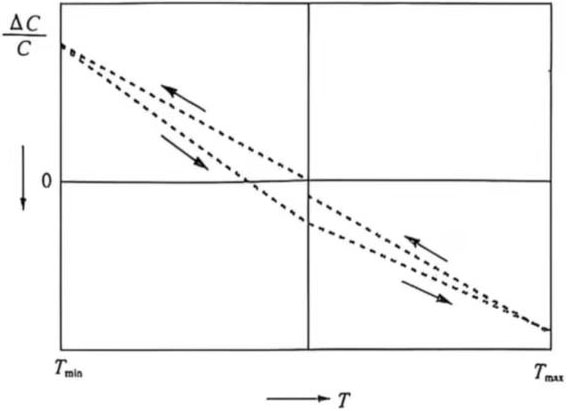
Figure 1 Relationship between capacitance and temperature
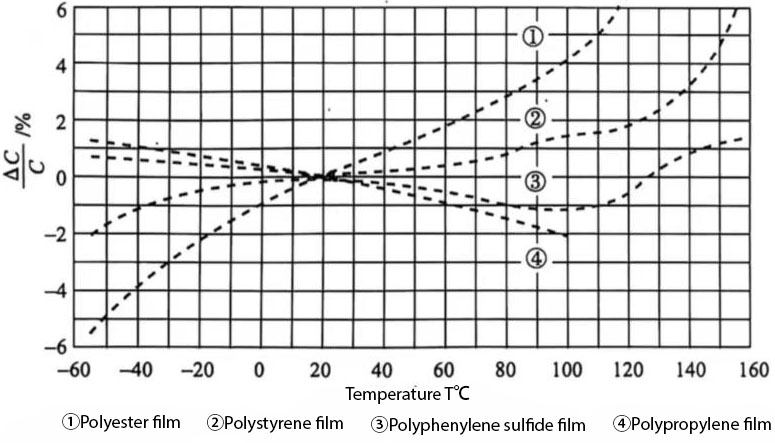
Figure 2 Typical temperature characteristics of capacitance of different types of capacitors
3.Relationship between capacitance and humidity
The capacitance of plastic outer layer capacitors will cause the capacitance to change inversely with the change of ambient humidity. This change depends on the different types of capacitors. The insulating material and effective air gaps between layers will change in ambient humidity and affect the measured capacitance.
The humidity coefficient βc is defined as the relative capacitance change for every 1% change in humidity (at a certain temperature):
![]() (2)
(2)
Where, C1 is the capacitance at relative humidity F1; C2 is the capacitance at relative humidity F2,.
Typical values of relative humidity coefficients for different media are shown in Table 2:
Table 2 Humidity coefficients for different media

The ratio of moisture absorption and drying treatment varies with time, depending on the diffusion of water vapor. The time constant is determined by the type of capacitor, ranging from half a day (such as capacitors without outer packaging) to several weeks (such as capacitors with plastic casing).
When the relative humidity is below 30%, the humidity coefficient is very low, and when the relative humidity is above 85%, the humidity coefficient will be very different. The relationship between the capacitance and relative humidity of capacitors with different dielectrics is shown in Figure 3. From Table 2 and Figure 3, it can be seen that among the four dielectrics, the relative humidity coefficient of polyphenylene sulfide capacitor of film changes the least, and the capacitance changes by less than 0.3% in the relative humidity range from 20% to 85%; polypropylene film capacitors are slightly inferior, and the capacitance changes by less than 0.5% in the range of 20% to 85%; polyester film capacitors have a relatively large humidity coefficient, and the capacitance changes by about 3.5% in the relative humidity range from 20% to 85%.
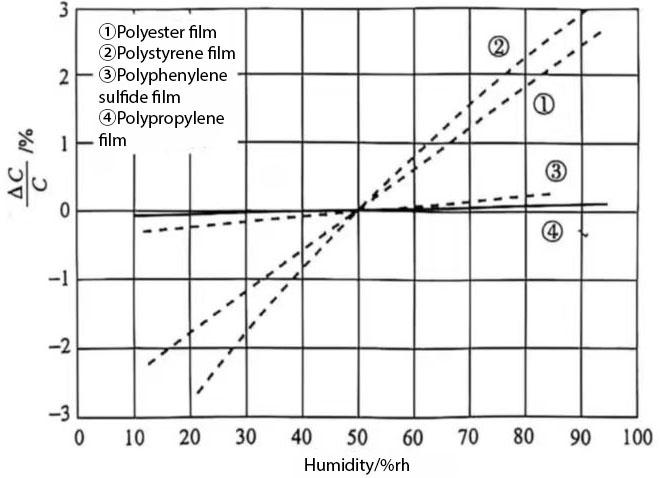
Figure 3 Relationship between capacitance and humidity of capacitors with different dielectrics
4.Relationship between capacitance and frequency
The capacitance of film capacitors with different dielectrics also changes with frequency. The frequency characteristics of various dielectric capacitors are shown in Figure 4. The capacitance of polyester film capacitors decreases with the increase of frequency; the capacitance of polyphenylene sulfide film capacitors basically does not change with frequency below 100kHz, and when the frequency is above 200kHz, the change of capacitance increases with the increase of frequency; the capacitance of polystyrene film capacitors decreases with the increase of frequency below 200kHz, and the capacitance increases with the frequency above 300kHz. Although the capacitance of the above dielectric film capacitors changes with frequency, it is very small. Polyphenylene sulfide film capacitors and polystyrene film capacitors need to be considered when the frequency is above 300kHz. The frequency characteristics of the capacitance of polypropylene capacitor of film are very good. When the frequency reaches 1MHZ, the capacitance is still not affected by the frequency.
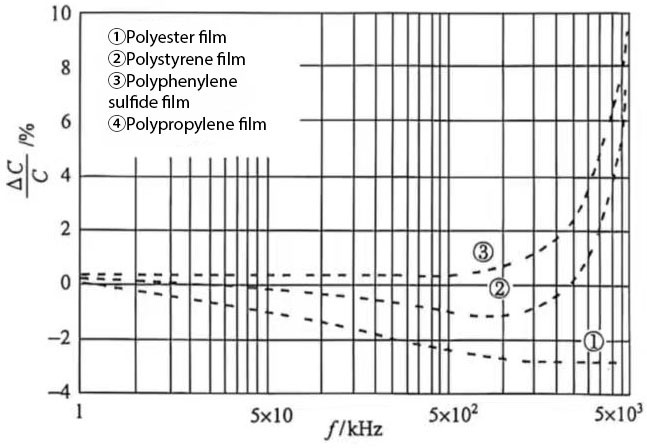
Figure 4 Relationship between capacitance and frequency of capacitors with different dielectrics
Since the capacitor itself inevitably has parasitic inductance, its equivalent circuit is an LCR series resonant circuit. Therefore, near the capacitor resonant frequency, the parasitic inductance and the capacitor itself produce series resonance, resulting in an additional reduction in impedance. This is the same as the effect caused by the increase in capacitance.
5.Relationship between capacitance and time
The instability of capacitance over time, in the capacitance drift iz=|∆C/C|, does not take into account the negative effects of time change ac and relative humidity βc, and the capacitance drift is 2a as a period. If the capacitor frequently changes temperature over a wide range near the relative humidity limit in a wide temperature range, the capacitance drift may exceed the given value. The values given below can be used as typical values for different types of capacitors as shown in Table 3.
Table 3 Time drift capacitor of film

The capacitance capacitor of film does not change with the operating voltage.
